| Sioux Indians, Tribes, Nations, Bands, and Sioux Reservations |
|
|
 |
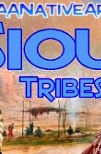 |
 |
|
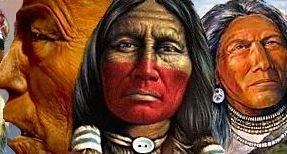 |
|
 |
|
 |
|
|
Dakota, Lakota, Nakota "Allies or Friends" |
|
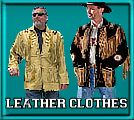     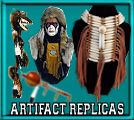 |
| |
Dakota, Lakota, Nakota |
Artifact Replicas|Jewelry|Clothing|Figurines|On Sale|New ProductsSioux indians, tribes, nations and reservationsThe Great Sioux Nation is actually made up of 18 separate tribes, or bands in the US, and 12 in Canada. These are divided into three divisions: the Lakota Sioux, Dakota Sioux, and the Nakota Sioux. Each division speaks a different, but similar, Sioux language dialect. There are also numerous subdivisions of the Sioux tribe, some included in the three main Sioux division bands, and some recognized now as tribes separate from the Sioux Nation. Famous Sioux chiefs and historical leaders include Sitting Bull, Crazy Horse, Red Cloud, Bigfoot, Little Thunder, Big Mouth, Red Thunder (also known as Shappa, the Beaver), Waneta, Wizikute (a.k.a. Pine Shooter), Red Fish, American Horse, Crow Dog, Young Man Afraid of His Horses, Red Bird (Zitkaduta), Big Curly, John Otherday (Aagpetu-tokecha), Redwing, Walking Buffalo (Tatankamani), Wamditanka (Great War Eagle), Gray Iron, Shakopee (Shakpe, 'six'), Mankato (M-ak'-to, Blue Earth), Old Mankato, Black Elk, Lone Horn, Touch the Clouds, Taoyateduta, Inkpaduta, and Napeshneeduta (Red Man Who Flees Not). Billy Mills was a famous Sioux Olympian athlete. The word Sioux is an abbreviated form of Nadouessioux borrowed by the French Canadians to form the word Nadoüessioüak, which is a bastardization of the early Ottawa exonym na·towe·ssiwak, meaning the Sioux. The Proto-Algonquian form natowewa meaning "Northern Iroquoian" has reflexes in several daughter languages that refer to a small rattlesnake (massasauga, Sistrurus). This information was interpreted by some to mean that the Ottawa borrowing was an insult. However, this proto-Algonquian term most likely is ultimately derived from a form of atowe meaning simply "speak foreign language", which was later extended in meaning in some Algonquian languages to refer to the massasauga. Thus, contrary to many accounts, the Ottawa word na·towe·ssiwak never equated the Sioux with snakes. Today there are thirty distinct Sioux tribes recognized by the United States and Canada. Prior to reservations, these "tribes" were referred to as divisions and bands. Some Sioux tribes are commonly called by synonomous names which refer to the same group of people. The US Federal Government applied the name ""Sioux" to all Yankton/Yanktonai/Santee/Lakota people in the 19th and 20th centuries. The term Dakota has also been applied by anthropologists and governmental departments to refer to all Sioux groups, resulting in names such as Teton Dakota, Santee Dakota, etc. This was due in large part to the misrepresented translation of the Ottawa word from which Sioux is derived (supposedly meaning "snake," see above). However, some of the tribes have formally or informally adopted traditional names: the Rosebud Sioux Tribe is also known as the Sicangu Oyate, and the Oglala often use the name Oglala Lakota Oyate, rather than the English "Oglala Sioux Tribe." The three main divisions of Sioux, the Dakota, Lakota, and Nakota all mean "ally," commonly translated as "friend." These are all the same language, the differences are just in pronounciation of the dialects, similar to the differences in speech between the Northern and Southern English speaking people. They speak the same language, but use different accents. The Sioux tribes maintain many separate tribal governmentsThey are scattered across several reservations and communities in North and South Dakota, Minnesota, Nebraska, and also in Manitoba and southern Saskatchewan in Canada. The Yankton-Yanktonai, the smallest division, reside on the Yankton reservation in South Dakota and the Northern portion of Standing Rock Reservation, while the Santee live mostly in Minnesota and Nebraska, but include bands in the Sisseton-Wahpeton, Flandreau, and Crow Creek Reservations in South Dakota. The Lakota are the westernmost of the three groups, occupying lands in both North and South Dakota. The Yankton-Yanktonai are a branch of Sioux peoples who moved into northern Minnesota. They originally constituted of two main ethnic groups: the Yankton ("campers at the end") and Yanktonai ("lesser campers at the end"). Economically, they were involved in quarrying pipestone. It should be remembered that the 'divisions' of the old political organization of the Dakota Nations, collectively referred to as the Seven Council Fires, or Océti Sakówi?, is used to index the entire Dakota collective. The word khóda in Dakota (and khóla in Lakota) means ‘friend’ or ‘ally.’ Therefore, “Dakota means an alliance of friends. The root word is frequently come upon in the Siouan language, as in okodakiciye, meaning society, association, republic. The tribe consists of seven bands closely related, springing from one parent stock [sic] and still joined in alliance for mutual protection. The three 'divisions' are somewhat arbitrary and are based primarily on relatively minor dialectical differences; there are many kinship ties throughout the three groups, since these 'groups' were historically (and are probably today as well) much more fluid than discrete.[citation needed] Furthermore, due to land expropriation and massive social upheavals caused by the "Dakota-U.S. Wars" (circa 1862-1890), some members of all three groups fled to Rupert's Land, later the Northwest Territories of Canada (est. 1870). Their descendants reside on eight small Dakota Reserves in Canada, four of which are located in Manitoba (Sioux Valley, Long Plain [Dakota Tipi], Birdtail Creek, and Oak Lake [Pipestone]) and the remaining four (Standing Buffalo, Moose Woods [White Cap], Round Plain [Wahpeton], and Wood Mountain) in Saskatchewan. The Santee people migrated north and westward from the south and east into Ohio then to Minnesota. The Santee were a woodland people who thrived on hunting, fishing and subsistence farming. Migrations of Anishinaabe/Chippewa people from the east in the 17th and 18th centuries, with muskets supplied by the French and British, pushed the Santee further into Minnesota and west and southward, giving the name "Dakota Territory" to the northern expanse west of the Mississippi and up to its headwaters. The western Santee obtained horses, probably in the 17th century (although some historians date the arrival of horses in South Dakota to 1720), and moved further west, onto the Great Plains, becoming the Titonwan tribe, subsisting on the buffalo herds and corn-trade with their linguistic cousins, the Mandan and Hidatsa along the Missouri. SIOUX INDIAN TRIBES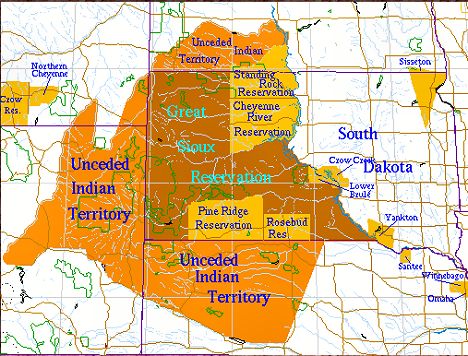 Sioux Ethnic GroupsThe Sioux are divided into three language groups, the larger of which are divided into sub-divisions, and further branched into bands.

Native American Cultures -The Plains Poster Buy at AllPosters.com Framed Mounted |

What's New in the Gallery Store: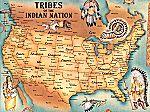 Native American Tribes by States Poster 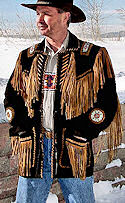 25 new fringed leather jackets 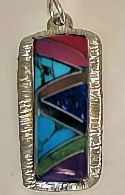 Zuni Style inlaid stone jewelry More New Products |
|||||||||||||||||||||||||||||||||||||||||||||||||||